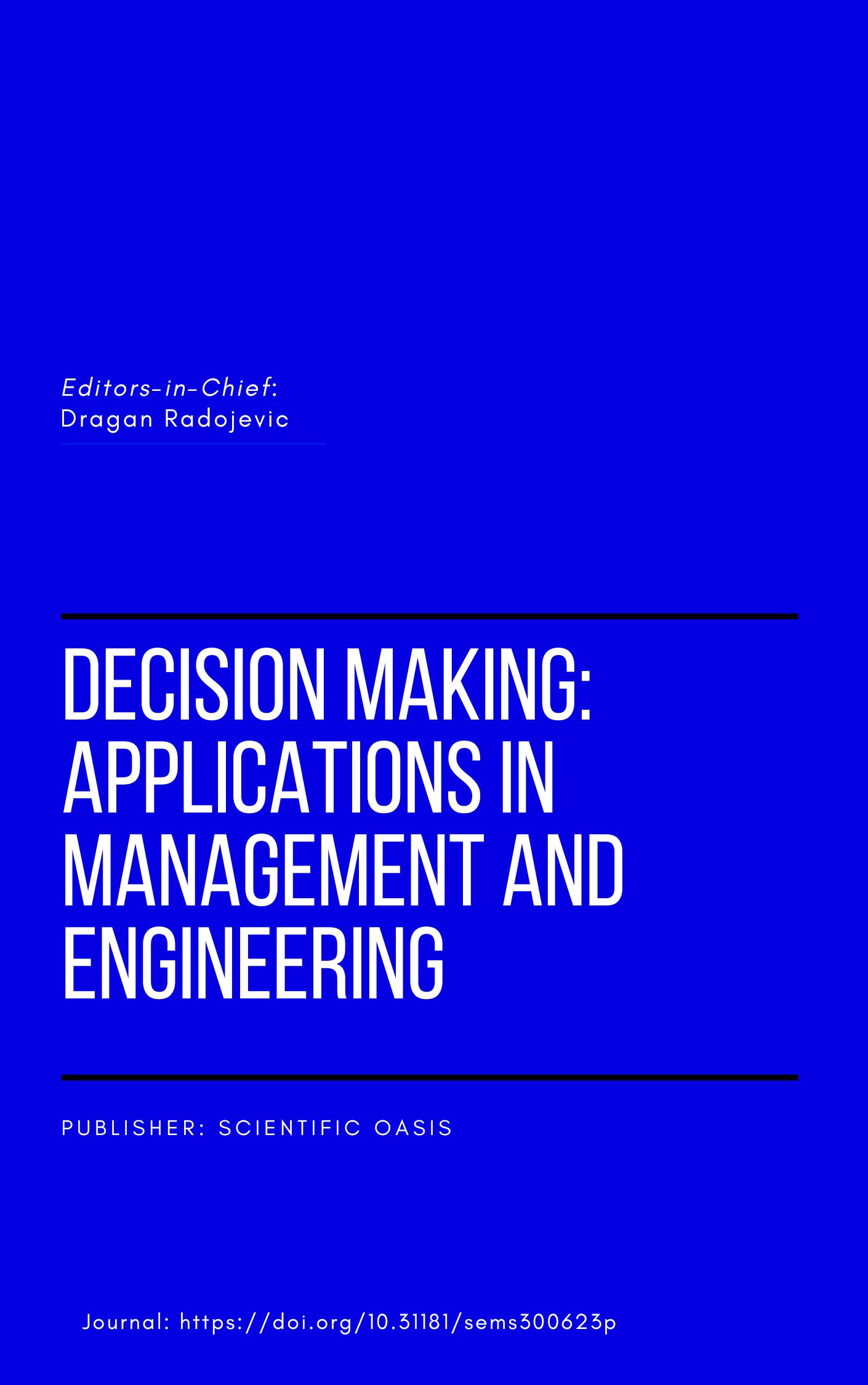Improving Higher Education Resource Allocation Efficiency and Its Spatial Correlation for Sustainable Development in China
DOI:
https://doi.org/10.31181/dmame7220241321Keywords:
Higher Education Resource Allocation Efficiency; Three-Stage SBM-DEA; Spatial Correlation; Sustainable DevelopmentAbstract
Amidst global economic integration and the expansion of the knowledge economy, higher education serves as a fundamental pillar of national innovation systems. The strategic importance of its resource allocation efficiency is critical for attaining sustainable development objectives. This study introduces an advanced three-stage super-efficient slacks-based measure (SBM)-data envelopment analysis (DEA) model, incorporating spatial econometric analysis to conduct a multi-dimensional assessment of higher education resource allocation efficiency (HERAE) across 31 Chinese provinces from 2015 to 2022. Unlike the conventional DEA model, this approach innovatively integrates the advantages of the super-efficient SBM model in addressing non-radial relaxation with the Three-stage DEA model’s capability to account for environmental variables. It effectively mitigates the shortcomings of prior research that disregards environmental influences and stochastic disturbances. Empirical findings reveal that, after adjusting for environmental variables, the average technical efficiency (TE) and scale efficiency (SE) of higher education resource allocation (HERA) in China declined to 0.553 and 0.659, respectively, whereas pure technical efficiency (PTE) increased to 0.857. This indicates that traditional evaluation techniques tend to overestimate efficiency levels. The overall efficiency in the eastern region (0.739) was significantly greater than in the central (0.689), north-eastern (0.486), and western (0.368) regions. Three principal factors influencing efficiency include the level of regional economic development, governmental support for education, and the extent of social development. Spatial analysis revealed that the global Moran index fluctuated between 0.160 and 0.414 from 2015 to 2021, yet in 2022, it shifted to a non-significant negative correlation due to the pandemic’s impact. Consequently, this study suggests policy measures such as establishing a regional coordination framework, strengthening digital governance, and fostering collaboration among educational institutions to support decision-making
Downloads
References
[1] Omoeva, C., N.M. Cunha, and W. Moussa. (2021). Measuring equity of education resource allocation: An output-based approach. International Journal of Educational Development, 87, 102492. https://doi.org/10.1016/j.ijedudev.2021.102492
[2] Li, J., et al. (2024). Exploring the influence of returnees’ scientific collaboration networks on research performance. Education Science and Management, 3(2), 145-155. https://doi.org/10.56578/esm020303
[3] Wen, J. and Y. Zhao. (2022). An urban and rural educational resource sharing and exchange platform based on cloud platform access technology. Ingenierie des Systemes d'Information, 27(3), 515. https://doi.org/10.18280/isi.270320
[4] Liu, S., X. Luo, and M. Liu. (2023). Was Chinese “Double-First Class” construction policy influential? Analysis using propensity score matching. Sustainability, 15(8), 6378. https://doi.org/10.3390/su15086378
[5] Ma, D. and X. Li. (2021). Allocation efficiency of higher education resources in china. International Journal of Emerging Technologies in Learning, 16(11), 59-71. https://doi.org/10.3991/ijet.v16i11.23315
[6] Xu, C. (2024). Resource Allocation in China’s Public Universities: Administrators’ Perceptions. Higher Education Policy, 1-23. https://doi.org/10.1057/s41307-024-00356-1
[7] Liefner, I. (2003). Funding, resource allocation, and performance in higher education systems. Higher education, 46, 469-489. https://doi.org/10.1023/A:1027381906977 DOI: https://doi.org/10.1023/A:1027381906977
[8] Julhadi, J. and R. Mahyudin. (2023). Human resource management in Islamic educational institutions to improve competitiveness in society 5.0 era. International Journal of Sustainable Development and Planning, 18(2), 611-619. http://eprints.umsb.ac.id/id/eprint/1895
[9] Wu, Z., H. Y. Liu,, X. Y. Deng. (2024). Teaching Practices for the Cultivation of “AI + X” Composite Talents in Higher Education: Challenges and Strategies. Education Science and Management, 2(3), 156-175. https://doi.org/10.56578/esm020304
[10] Kruss, G., et al. (2015). Higher education and economic development: The importance of building technological capabilities. International Journal of Educational Development, 43, 22-31. https://doi.org/10.1016/j.ijedudev.2015.04.011 DOI: https://doi.org/10.1016/j.ijedudev.2015.04.011
[11] Lozano, R., et al. (2015). A review of commitment and implementation of sustainable development in higher education: results from a worldwide survey. Journal of cleaner production, 108, 1-18. https://doi.org/10.1016/j.jclepro.2014.09.048 DOI: https://doi.org/10.1016/j.jclepro.2014.09.048
[12] Salas-Velasco, M. (2020). Does greater school resource allocation improve efficiency in education production? Performance assessment of Spanish public sector-funded schools. International Journal of Educational Management, 34(5), 903-915. https://doi.org/10.1108/IJEM-08-2019-0305
[13] Liao, H., et al. (2024). Evaluation of educational resource utilization efficiency, regional technological heterogeneity, and total factor productivity change in 35 European countries. Plos one, 19(1), e0295979. https://doi.org/10.1371/journal.pone.0295979
[14] Chang, D.-F. and A. Chang. (2024). Analysis of the influence of fund allocation and sustainable academic efficiency based on a transformation of public goods in higher education. Sustainability, 16(5), 2000. https://doi.org/10.3390/su16052000
[15] Zhang, G., J. Wu, and Q. Zhu. (2020). Performance evaluation and enrollment quota allocation for higher education institutions in China. Evaluation and Program Planning, 81, 101821. https://doi.org/10.1016/j.evalprogplan.2020.101821
[16] He, T. (2022). A Multiobjective Allocation Method for High‐Quality Higher Education Resources Based on Cellular Genetic Algorithm. Mathematical Problems in Engineering, 2022(1), 4322078. https://doi.org/10.1155/2022/4322078
[17] McClure, K.R., et al. (2023). Privatization and cost inefficiency at US Public research universities. Studies in Higher Education, 48(9), 1498-1515. https://doi.org/10.1080/03075079.2023.2204922
[18] Chen, B., et al. (2024). The measurement, level, and influence of resource allocation efficiency in universities: empirical evidence from 13 “double first class” universities in China. Humanities and Social Sciences Communications, 11(1), 1-16. https://doi.org/10.1057/s41599-024-03461-z
[19] Sun, J., H. Wu, and S. Shi. (2023). A research of the evaluation of preschool education resource allocation level and spatio-temporal differences: Based on repeated indicators method and Theil index. Heliyon, 9(6). https://doi.org/10.1016/j.heliyon.2023.e16362
[20] Sun, Y., et al. (2023). Efficiency evaluation for higher education institutions in China considering unbalanced regional development: A meta-frontier Super-SBM model. Socio-Economic Planning Sciences, 88, 101648. https://doi.org/10.1016/j.seps.2023.101648
[21] Tone, K. (2001). A slacks-based measure of efficiency in data envelopment analysis. European journal of operational research, 130(3), 498-509. https://doi.org/10.1016/S0377-2217(99)00407-5 DOI: https://doi.org/10.1016/S0377-2217(99)00407-5
[22] Luo, D. (2012). A note on estimating managerial inefficiency of three-stage DEA model. Statistical Research, 29(4), 104-107. https://doi.org/10.19343/j.cnki.11-1302/c.2012.04.017
[23] Liu, P., et al. (2024). A sustainable development study on innovation factor allocation efficiency and spatial correlation based on regions along the belt and road in China. Sustainability, 16(7), 2990. https://doi.org/10.3390/su16072990
Downloads
Published
How to Cite
Issue
Section
License
Copyright (c) 2025 Decision Making: Applications in Management and Engineering

This work is licensed under a Creative Commons Attribution 4.0 International License.












